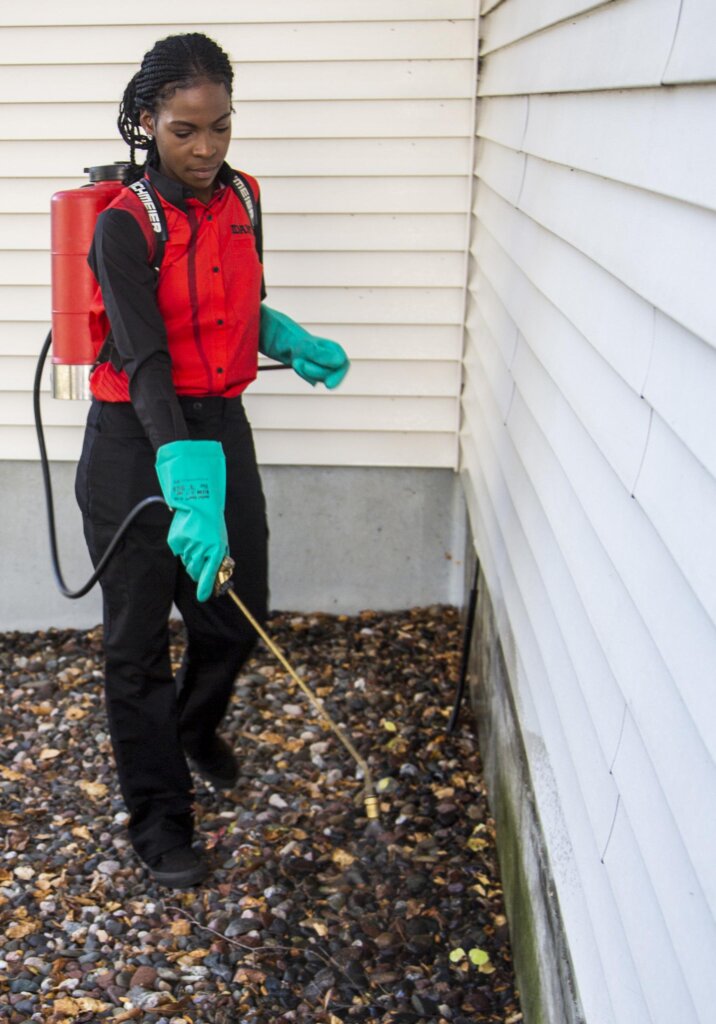Reputable A1 Bed Bug Exterminator Charlotte - Eliminate Bed Bugs Quick
Reputable A1 Bed Bug Exterminator Charlotte - Eliminate Bed Bugs Quick
Blog Article
Bed Pest Therapy Malfunction: Contrasting Chemical Vs. Non-Chemical Solutions
In the world of pest control, especially when dealing with the consistent problem of bed insects, the option in between chemical and non-chemical therapy services can be a critical one. Both methods supply distinctive benefits and disadvantages, affecting factors such as performance, safety considerations, and total cost. By taking a look at the nuanced details of each approach, a clearer understanding of which course to seek in resolving a bed bug infestation can be achieved.
Performance of Chemical Treatments
Chemical therapies for bed bug invasions have been widely identified for their potent and rapid efficacy in eradicating these pests. When taking into consideration the performance of chemical treatments, it is crucial to comprehend that they can give a fast and comprehensive solution to a bed bug trouble. Expert exterminators typically depend on insecticides to target bed pests at different phases of their life cycle, consisting of eggs, grownups, and fairies. These chemicals usually function by interfering with the bed pests' nerve system, leading to paralysis and ultimate fatality.
In addition, chemical therapies have the advantage of providing recurring impacts, suggesting that they can continue to eliminate bed insects even after the preliminary application. This residual action is particularly valuable in combating any type of possible re-infestations. Furthermore, the fast activity of chemical therapies can bring relief to individuals dealing with extreme bed pest infestations, permitting them to gain back control of their home rapidly.
Safety Issues With Chemical Solutions
One essential element that calls for cautious consideration when using chemical options for bed insect therapy is guaranteeing the safety of passengers and the atmosphere. Direct exposure to specific chemicals utilized in bed pest therapies can lead to breathing problems, skin inflammation, or other negative reactions, particularly in individuals with pre-existing conditions or sensitivities.
In addition, the ecological influence of chemical remedies is another substantial factor to consider. Some pesticides made use of in bed pest treatments may be hazardous to useful bugs, wild animals, and communities if they seep into the soil or water supply. It is vital to use chemical therapies judiciously, complying with safety and security guidelines, and considering much less harmful alternatives to reduce these dangers and make sure the secure and efficient management of bed insect invasions.
Benefits of Non-Chemical Strategies
Considering the prospective safety concerns and environmental effect connected with chemical solutions for bed insect therapy, discovering non-chemical techniques offers an appealing choice with a number of unique benefits. Non-chemical therapies are eco friendly, as they do not add to air or water air pollution, making them a lasting choice for pest control.
In addition, non-chemical options can be reliable in targeting bed insects, consisting of hard-to-reach areas where chemical treatments might not penetrate. Techniques such as warmth treatment, vacuuming, steam cleaning, and bed mattress coverings give complete removal without the use of dangerous chemicals. Moreover, non-chemical strategies can be less turbulent, needing minimal prep work and permitting quicker reentry right into dealt with locations. Generally, opting for non-chemical bed bug treatment methods not only focuses on safety and security and environmental management however additionally guarantees extensive and effective pest control.
Limitations of Non-Chemical Treatments

Furthermore, non-chemical therapies commonly need numerous applications to achieve effective removal. This can be lengthy and might not constantly assure complete removal of all bed insects and their eggs, especially in hard-to-reach or concealed areas.
In addition, the success of non-chemical therapies greatly relies upon correct implementation and thoroughness, which can be challenging for people without professional proficiency. Inadequate application of non-chemical approaches might cause insufficient elimination, leading to persistent invasions and the need for extra treatments.
Therefore, while non-chemical therapies have their benefits, it is vital to acknowledge these constraints and treat termite infested wood consider them when determining the Homepage most efficient strategy for taking care of bed bug problems.
Cost Comparison: Chemical Vs. Non-Chemical Options
Provided the restrictions associated with non-chemical treatments, a necessary element to examine in the context of bed pest monitoring is the cost contrast in between chemical and non-chemical alternatives. In contrast, non-chemical therapies like heat treatment or vapor can be extra costly, with costs varying from $1,000 to $6,000 for an entire home. While the initial cost of chemical treatments may seem lower, multiple treatments may be needed to completely remove the problem, potentially enhancing the total price.
Conclusion

Considering the possible security problems and ecological impact linked with chemical options for bed pest treatment, discovering non-chemical approaches presents a promising alternative with several unique benefits.Offered the constraints connected with non-chemical treatments, a necessary element to evaluate in the context of bed bug management is the expense comparison between chemical and non-chemical alternatives. In contrast, non-chemical therapies like warm therapy or vapor can be more pricey, with prices ranging from $1,000 to $6,000 for an entire home. While the initial price of chemical therapies might seem reduced, multiple treatments might be needed to totally get rid of the infestation, potentially raising the total cost.In best treatment for subterranean termites final thought, when contrasting chemical and non-chemical bed bug treatment choices, it is necessary to consider performance, safety and security, advantages, limitations, and price.
Report this page